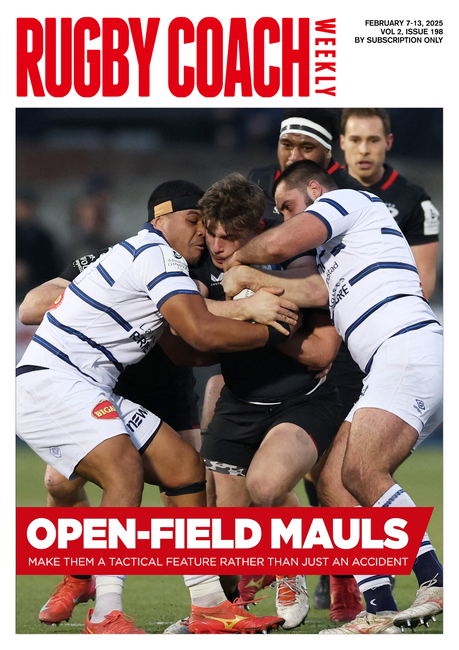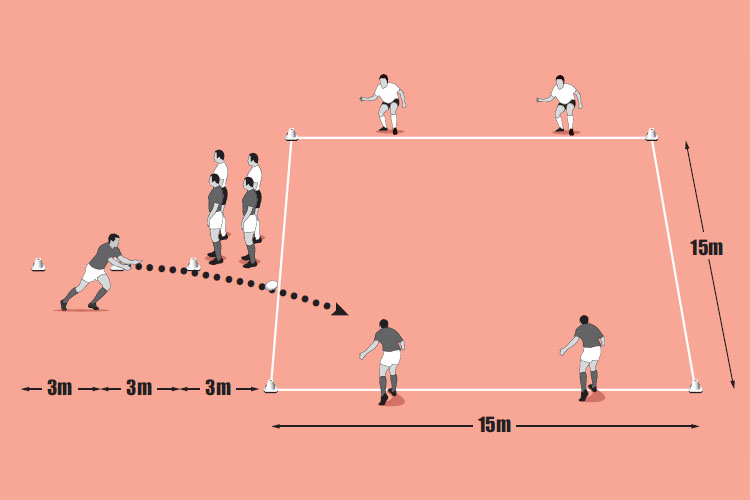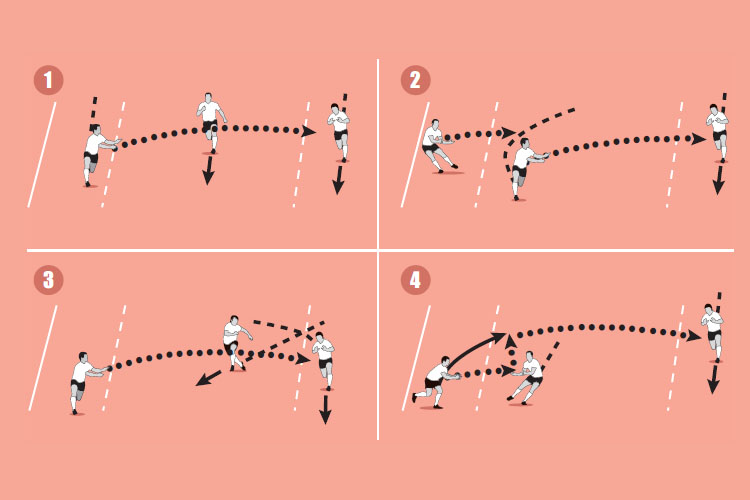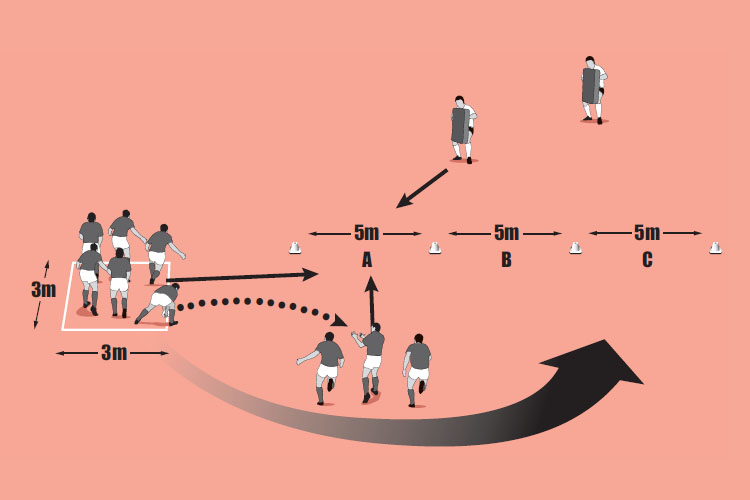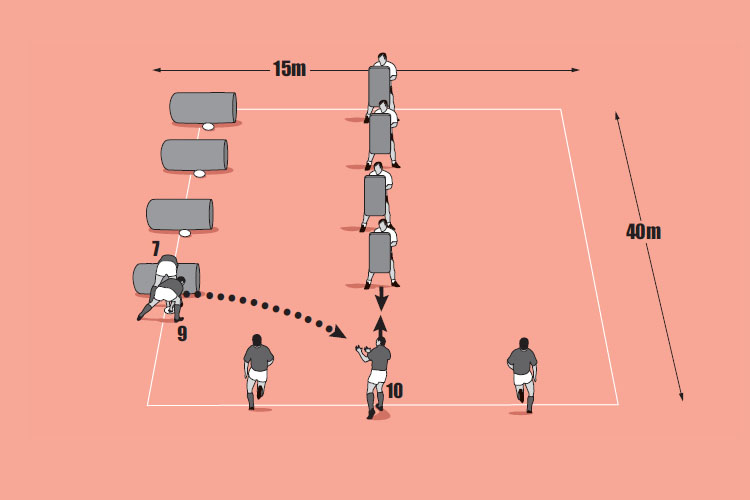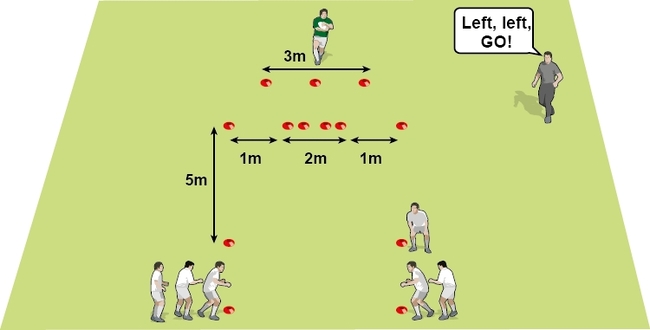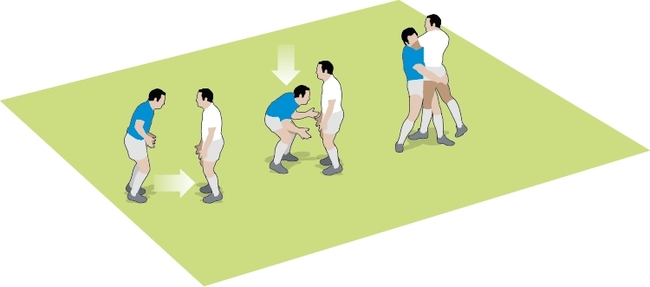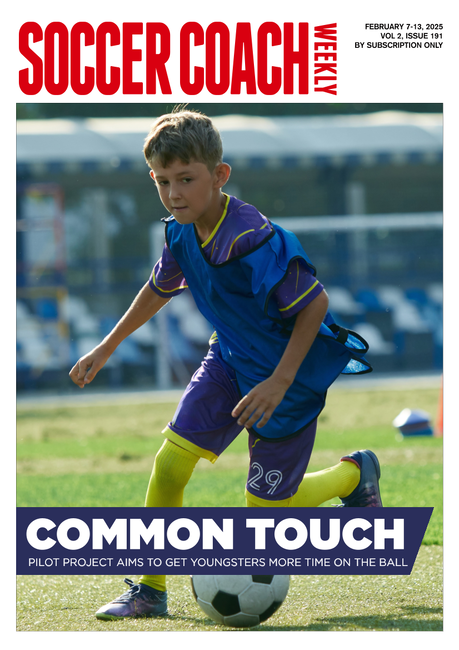Ear marking
It is vital you make sure your players’ head positions are correct in the tackle. “Ear marking” will get them to focus on pushing their ear against the ball carrier at contact – enhancing their technique and making the tackle more effective.
Warm up time: 5-7
Session time: 8-10
Development time: 10-12
Game time: 15-20
Warm down time: 5-7
What to think about
This session develops the principles of a good offensive tackle:- Good footwork so the tackler’s feet are close to the ball carrier.
- Driving up from the ground in the tackle.
- Keeping the eyes open and the head in a neutral position throughout the tackle.
- Punching the arms through and beyond the ball carrier.
- Staying on the feet for as long as possible and driving to the side, not in the direction from where the ball carrier has travelled.
set-up
- Get your feet close to the ball carrier.
- Aim your ear into the ribcage of the ball carrier.
- Drive up and through.
What you get your players to do
Set up two gates of cones, about 2m apart, slightly offset. Starting at walking pace, have a ruck pad holder come through one gate and the tackler through the other. The tackler concentrates on pushing his head hard into the side of the ruck pad. Once he has completed two tackles on one side of the ruck pad holder, he works on the other side. After all the players have had a go, the tackler now concentrates on tackling and driving the ruck pad holder to the side.Development
Put two tackle tubes 3m apart to form a corridor, and then another two about 2m behind to form another. Place one tackler in the middle of one of the set of tubes. Have a ball passed to an attacker who attempts to get to the end of the corridor, whilst the tackler aims to put him into the tubes. On completion, the tackler turns and repeats in the other corridor. He performs six tackles before swapping.Related Files
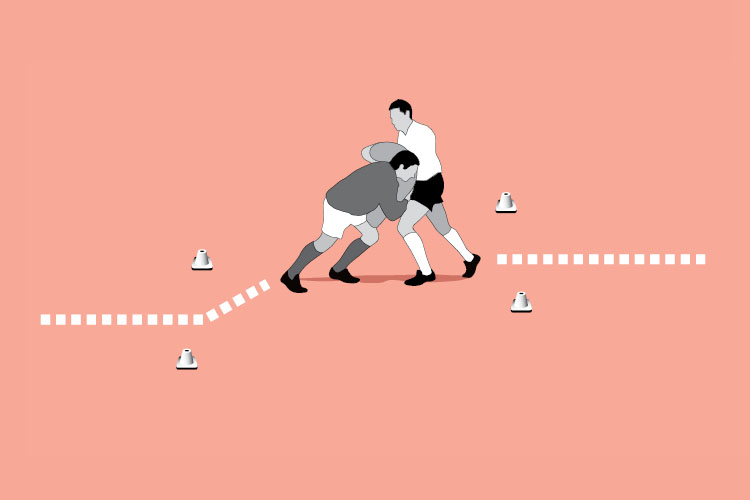
Game situation
Split into groups of three. Three attackers attempt to get from one end of a 10m square to the other against three defenders. If they are driven out of the square, the ball is given to the opposition. This is an extremely competitive game and can be built into a tournament between groups.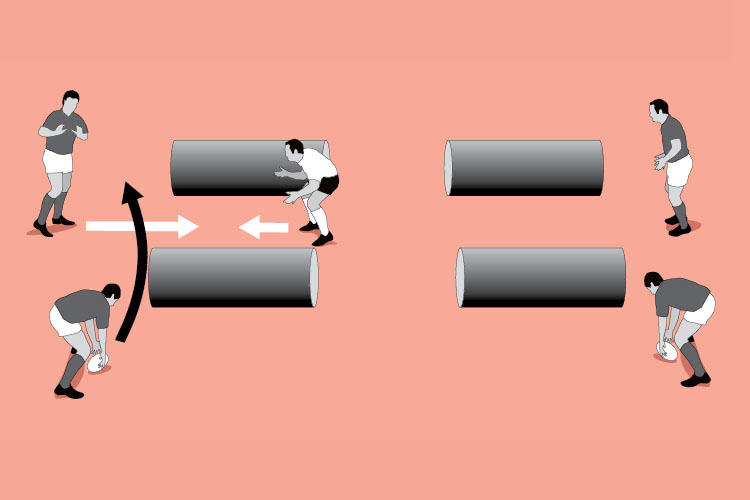
What to call out
- “Feel the warmth in your ear!”
- “Grab hard and drive up”
- “Keep your eyes open”
Newsletter Sign Up
Coaches Testimonials

Gerald Kearney, Downtown Las Vegas Soccer Club

Paul Butler, Florida, USA

Rick Shields, Springboro, USA

Tony Green, Pierrefonds Titans, Quebec, Canada
Subscribe Today
Be a more effective, more successful rugby coach
In a recent survey 89% of subscribers said Rugby Coach Weekly makes them more confident, 91% said Rugby Coach Weekly makes them a more effective coach and 93% said Rugby Coach Weekly makes them more inspired.
Get Weekly Inspiration
All the latest techniques and approaches
Rugby Coach Weekly offers proven and easy to use rugby drills, coaching sessions, practice plans, small-sided games, warm-ups, training tips and advice.
We've been at the cutting edge of rugby coaching since we launched in 2005, creating resources for the grassroots youth coach, following best practice from around the world and insights from the professional game.



